阿里四面:你知道Spring AOP创建Proxy的过程吗?
Posted JavaEdge.
tags:
篇首语:本文由小常识网(cha138.com)小编为大家整理,主要介绍了阿里四面:你知道Spring AOP创建Proxy的过程吗?相关的知识,希望对你有一定的参考价值。
因为Spring在运行期把切面中的代码逻辑动态“织入”到了容器对象方法内,让开发者能无感知地在容器对象方法前后任意添加代码片段,所以AOP其实就是个代理模式。凡是代理,由于代码不可直接阅读,是 bug 的重灾区。
案例
某游戏系统,含负责点券充值的类CouponService,它含有一个充值方法deposit():
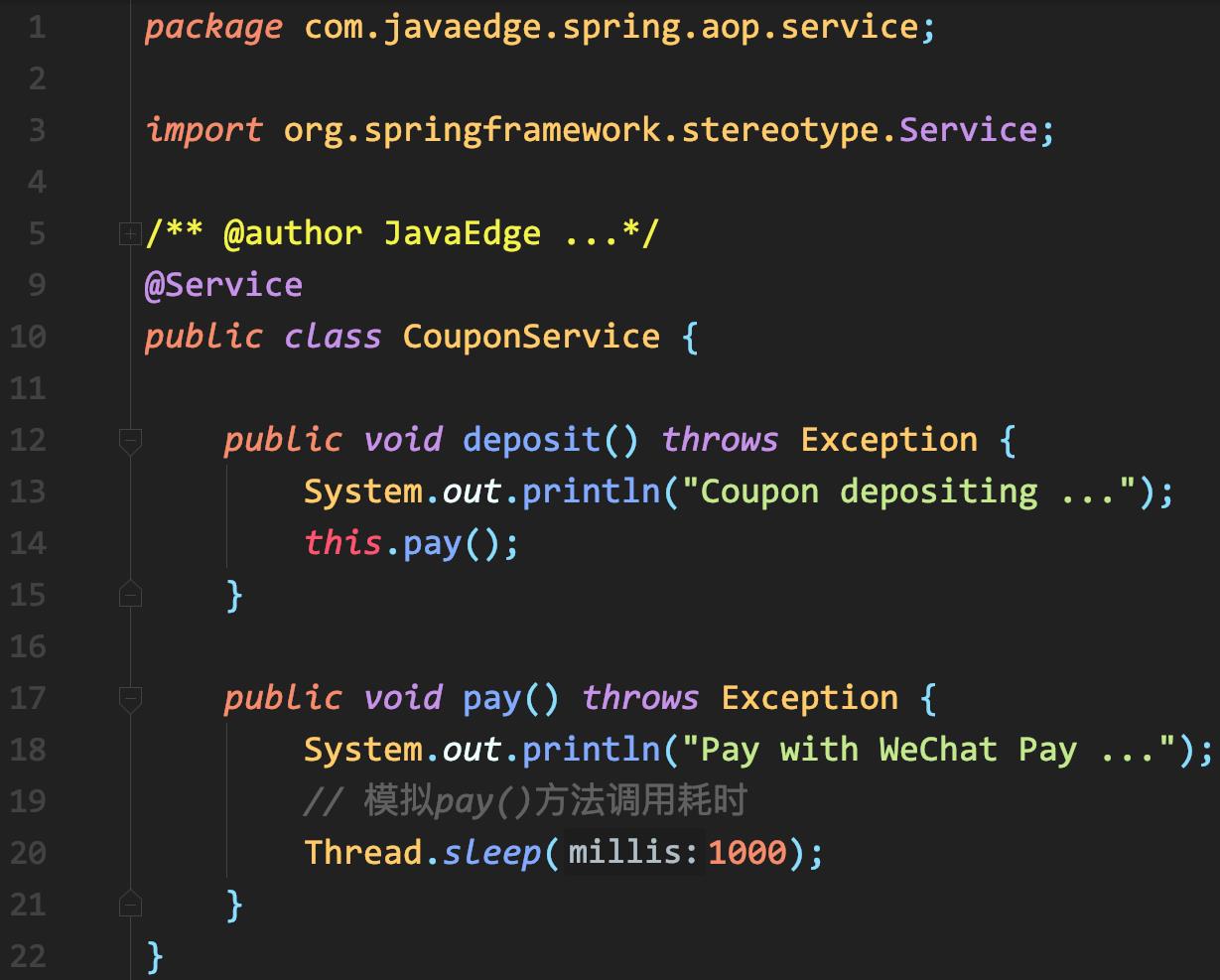
deposit()会使用微信支付充值。因此在这个方法中,加入pay()。
由于微信支付是第三方接口,需记录接口调用时间。
引入 @Around 增强 ,分别记录在pay()方法执行前后的时间,并计算pay()执行耗时。
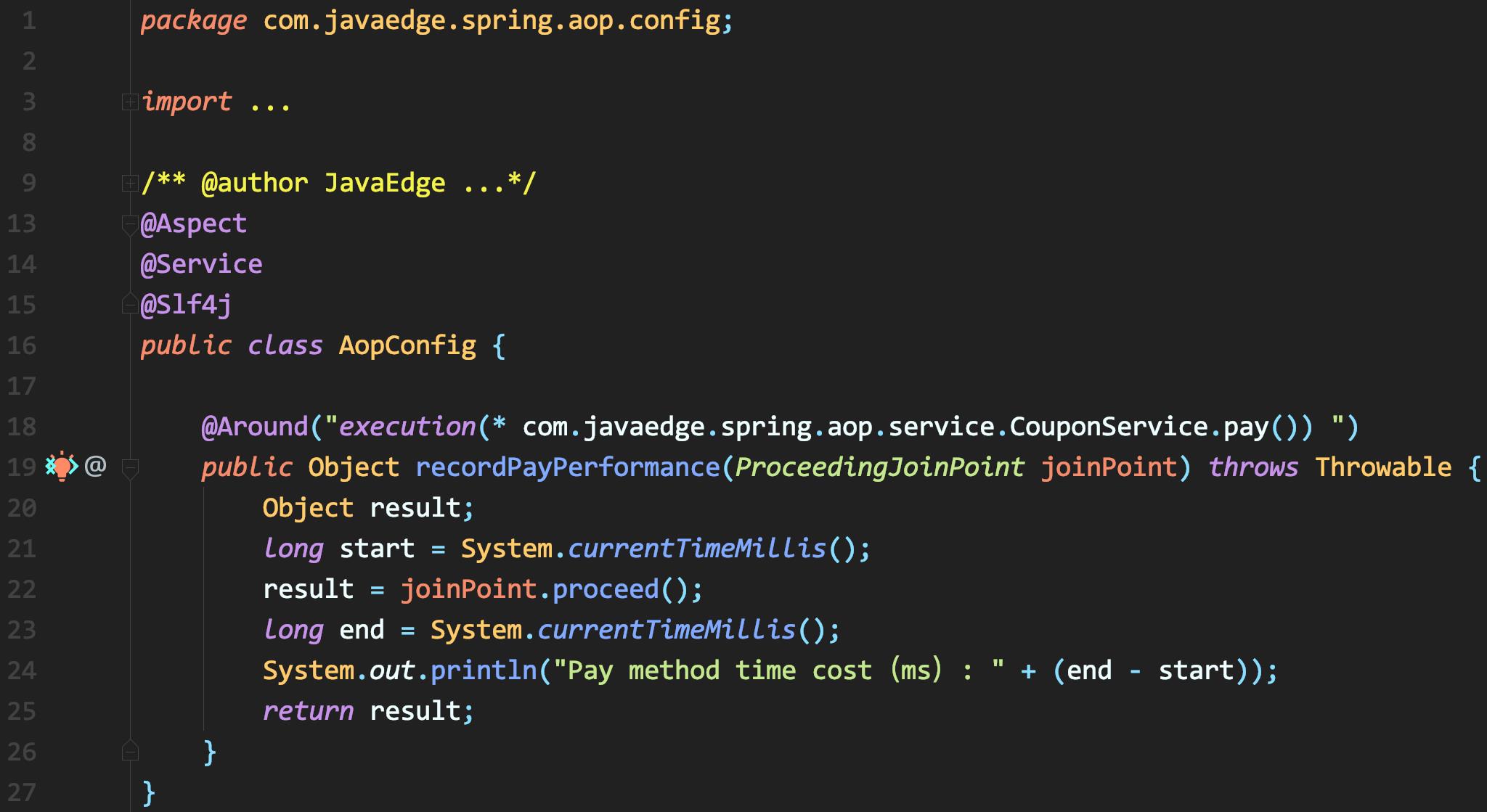
Controller:
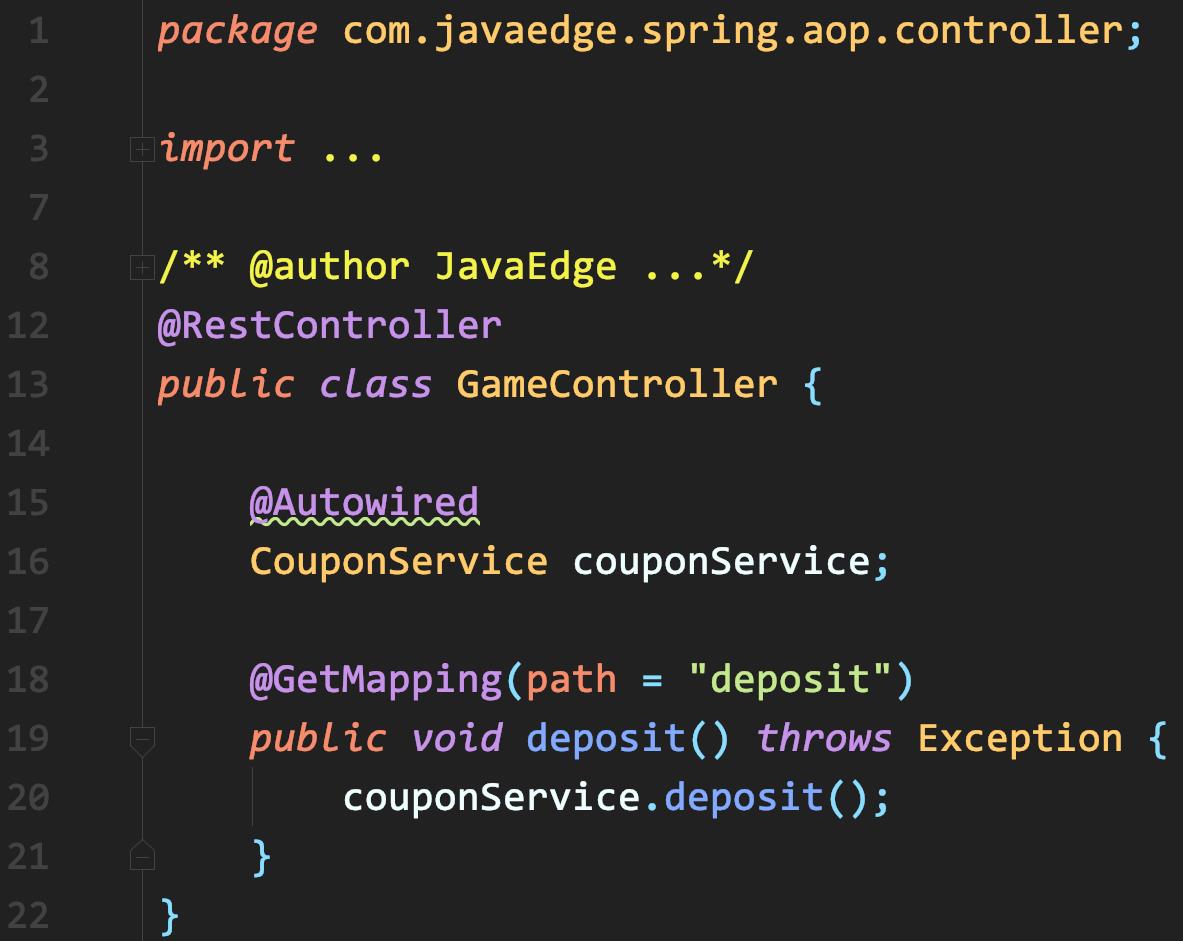
访问接口,会发现这段计算时间的切面并没有执行到,输出日志如下:

切面类明明定义了切面对应方法,但却没执行到。说明在类的内部,通过this调用的方法,不会被AOP增强。
解析
- this对应的对象就是一个普通CouponService对象:

- 而在Controller层中自动装配的CouponService对象:

是个被Spring增强过的Bean,所以执行deposit()时,会执行记录接口调用时间的增强操作。而this对应的对象只是一个普通的对象,并无任何额外增强。
为什么this引用的对象只是一个普通对象?
要从Spring AOP增强对象的过程来看。
实现
AOP的底层是动态代理,创建代理的方式有两种:
- JDK方式
只能对实现了接口的类生成代理,不能针对普通类 - CGLIB方式
可以针对类实现代理,主要是对指定的类生成一个子类,覆盖其中的方法,来实现代理对象。
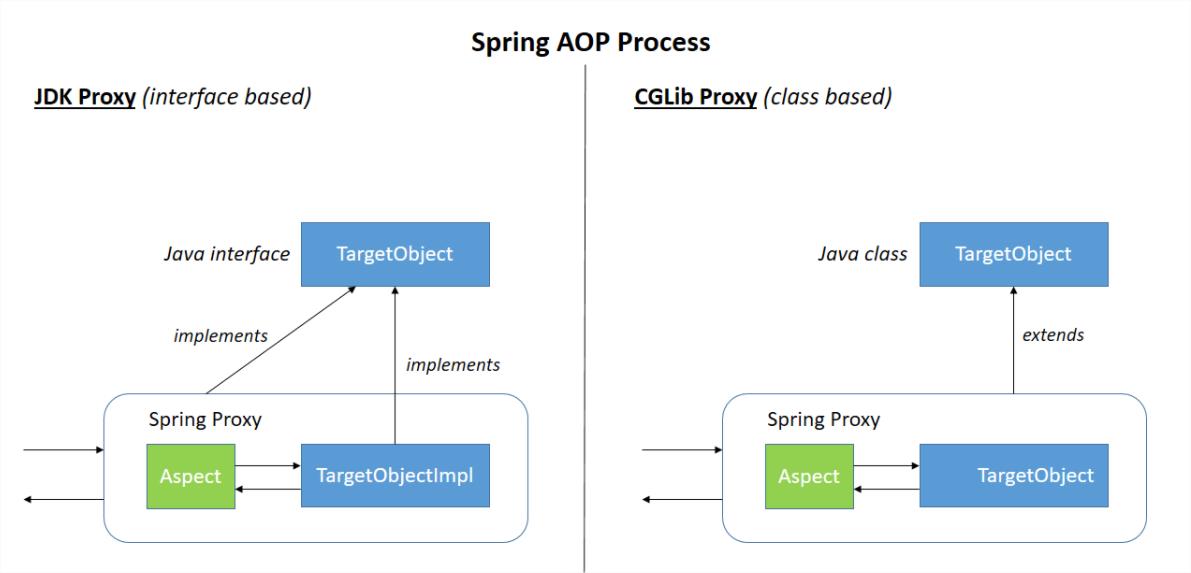
针对非Spring Boot程序,除了添加相关AOP依赖项外,还会使用 @EnableAspectJAutoProxy 开启AOP功能。
这个注解类引入AspectJAutoProxyRegistrar,它通过实现ImportBeanDefinitionRegistrar接口完成AOP相关Bean准备工作。
现在来看下创建代理对象的过程。先来看下调用栈:

- 创建代理对象的时机
创建一个Bean时
创建的的关键工作由AnnotationAwareAspectJAutoProxyCreator完成
AnnotationAwareAspectJAutoProxyCreator
一种BeanPostProcessor。所以它的执行是在完成原始Bean构建后的初始化Bean(initializeBean)过程中
AbstractAutoProxyCreator#postProcessAfterInitialization
public Object postProcessAfterInitialization(@Nullable Object bean, String beanName) {
if (bean != null) {
Object cacheKey = getCacheKey(bean.getClass(), beanName);
if (this.earlyProxyReferences.remove(cacheKey) != bean) {
return wrapIfNecessary(bean, beanName, cacheKey);
}
}
return bean;
}
关键方法wrapIfNecessary:在需要使用AOP时,它会把创建的原始Bean对象wrap成代理对象,作为Bean返回。
AbstractAutoProxyCreator#wrapIfNecessary
protected Object wrapIfNecessary(Object bean, String beanName, Object cacheKey) {
// 省略非关键代码
Object[] specificInterceptors = getAdvicesAndAdvisorsForBean(bean.getClass(), beanName, null);
if (specificInterceptors != DO_NOT_PROXY) {
this.advisedBeans.put(cacheKey, Boolean.TRUE);
Object proxy = createProxy(
bean.getClass(), beanName, specificInterceptors, new SingletonTargetSource(bean));
this.proxyTypes.put(cacheKey, proxy.getClass());
return proxy;
}
// 省略非关键代码
}
createProxy
创建代理对象的关键:
protected Object createProxy(Class<?> beanClass, @Nullable String beanName,
@Nullable Object[] specificInterceptors, TargetSource targetSource) {
// ...
// 1. 创建一个代理工厂
ProxyFactory proxyFactory = new ProxyFactory();
if (!proxyFactory.isProxyTargetClass()) {
if (shouldProxyTargetClass(beanClass, beanName)) {
proxyFactory.setProxyTargetClass(true);
}
else {
evaluateProxyInterfaces(beanClass, proxyFactory);
}
}
Advisor[] advisors = buildAdvisors(beanName, specificInterceptors);
// 2. 将通知器(advisors)、被代理对象等信息加入到代理工厂
proxyFactory.addAdvisors(advisors);
proxyFactory.setTargetSource(targetSource);
customizeProxyFactory(proxyFactory);
// ...
// 3. 通过代理工厂获取代理对象
return proxyFactory.getProxy(getProxyClassLoader());
}
经过这样一个过程,一个代理对象就被创建出来了。我们从Spring中获取到的对象都是这个代理对象,所以具有AOP功能。而之前直接使用this引用到的只是一个普通对象,自然也就没办法实现AOP的功能了。
修正
只有引用的是被动态代理创建出来的对象,才会被Spring增强,具备AOP该有的功能。
什么样的对象具备这样条件?
被@Autowired注解
通过 @Autowired,在类的内部,自己引用自己:
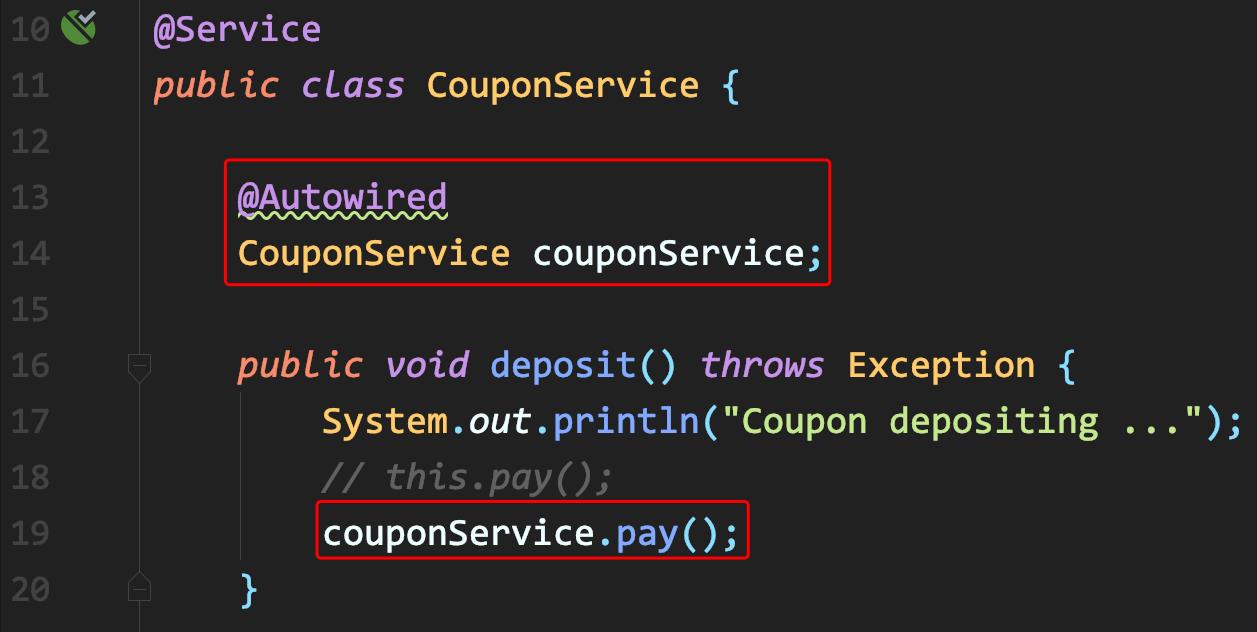

直接从AopContext获取当前Proxy
AopContext,就是通过一个ThreadLocal来将Proxy和线程绑定起来,这样就可以随时拿出当前线程绑定的Proxy。
使用该方案有个前提,需要在 @EnableAspectJAutoProxy 加配置项 exposeProxy = true ,表示将代理对象放入到ThreadLocal,这才可以直接通过
AopContext.currentProxy()
获取到,否则报错:

于是修改代码:
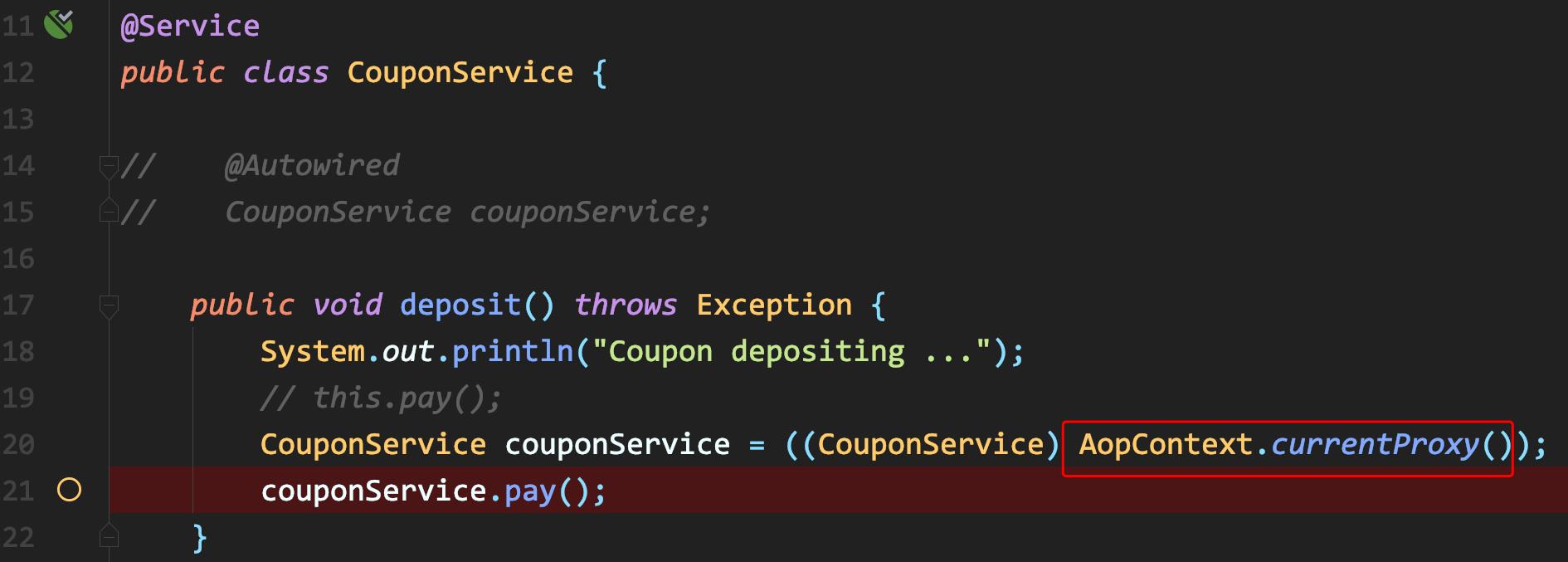
勿忘修改EnableAspectJAutoProxy 的 exposeProxy属性:

以上是关于阿里四面:你知道Spring AOP创建Proxy的过程吗?的主要内容,如果未能解决你的问题,请参考以下文章